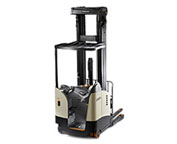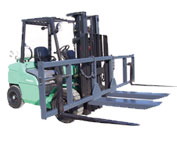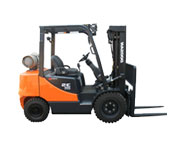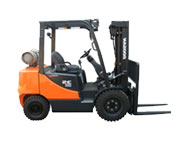
Control Valve for Forklift - The first automated control systems were being utilized more that two thousand years ago. In Alexandria Egypt, the ancient Ktesibios water clock made in the 3rd century is thought to be the first feedback control machine on record. This particular clock kept time by way of regulating the water level in a vessel and the water flow from the vessel. A common style, this successful tool was being made in the same manner in Baghdad when the Mongols captured the city in 1258 A.D.
Different automatic machines all through history, have been used so as to complete specific tasks. A popular style utilized all through the seventeenth and eighteenth centuries in Europe, was the automata. This tool was an example of "open-loop" control, featuring dancing figures which would repeat the same job repeatedly.
Feedback or "closed-loop" automatic control devices include the temperature regulator found on a furnace. This was actually developed in 1620 and accredited to Drebbel. Another example is the centrifugal fly ball governor developed in the year 1788 by James Watt and used for regulating steam engine speed.
J.C. Maxwell, who discovered the Maxwell electromagnetic field equations, wrote a paper in 1868 "On Governors," which can explain the instabilities demonstrated by the fly ball governor. He made use of differential equations so as to explain the control system. This paper exhibited the usefulness and importance of mathematical models and methods in relation to comprehending complicated phenomena. It even signaled the beginning of systems theory and mathematical control. Previous elements of control theory had appeared earlier by not as dramatically and as convincingly as in Maxwell's analysis.
New control theories and new developments in mathematical techniques made it possible to more precisely control more dynamic systems compared to the original model fly ball governor. These updated techniques include various developments in optimal control during the 1950s and 1960s, followed by progress in stochastic, robust, optimal and adaptive control methods in the 1970s and the 1980s.
New applications and technology of control methodology have helped make cleaner auto engines, cleaner and more efficient chemical processes and have helped make communication and space travel satellites possible.
Originally, control engineering was carried out as just a part of mechanical engineering. Control theories were initially studied with electrical engineering because electrical circuits could simply be explained with control theory techniques. Nowadays, control engineering has emerged as a unique practice.
The first control partnerships had a current output that was represented with a voltage control input. Since the proper technology in order to implement electrical control systems was unavailable at that time, designers left with the alternative of slow responding mechanical systems and less efficient systems. The governor is a very effective mechanical controller which is still normally utilized by some hydro plants. Eventually, process control systems became obtainable before modern power electronics. These process controls systems were usually utilized in industrial applications and were devised by mechanical engineers making use of hydraulic and pneumatic control devices, lots of which are still being utilized at present.
![]() Click to Download the pdf
Click to Download the pdf
Forklift Parts








Lift Parts Express
TOLL FREE: 1-888-695-7994
LOCAL: (714) 278-4711
1105 S Euclid St D-222
Fullerton, California
forkliftpartsfullerton.com
Email Us
About Us



